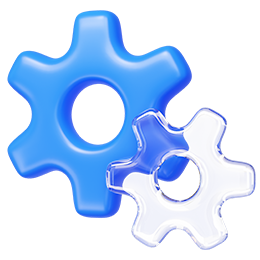What are the driving values of artificial intelligence (AI) and how have they been integrated into our translation platform for dubbing and subtitling?
The Deep-Into® platform integrates the best AI-based technologies in the market into its language solutions. In particular, these are based on Machine Learning, which is currently the most innovative method. In fact, Deep Learning, at the base of these technologies, is able to create algorithms built on artificial neurons, to analyze all existing information (internal or external to the system, depending on whether the system is incorporated or not) and generate a database that associates different contexts, words and their frequencies. These associations are used to create artificial neurons, which, when networked through different algorithms, can in turn produce new artificial neurons. Thanks to a series of interfaces developed in house, we are able to integrate our work and the feedback of our clients directly into our systems to make them even more brilliant and efficient.
For translations, our systems are based on two main technologies: computer aided translation software (CAT tools) and neural translation (NTM). We have an embedded system with a database of over 100 million translated words, structured in translation units. We are equipped with the best artificial intelligence neural translation technologies with algorithms based on artificial neural networks (ANN). Both systems are made available to our translators, who can thus benefit from the best translation recommendations ever.
For transcriptions, we use the main ASR (Automatic Speech Recognition) software based on NLP (Natural Language Processing), NLU (Natural Language Understanding) and NLG (Natural Language Generation) technologies to carry out STT (Speech-To-Text) conversions and therefore obtain a transcribed and already timecoded file. NLP technology allows obtaining speech recognition with syntactic and semantic analysis in a standardized order. The NLU technology then allows a reworking capable of understanding the meaning, intention and emotions, and finally the NLG technology automatically generates the texts. These technologies are used in particular in Google’s BERT algorithm, which increasingly seeks to refine its understanding of video content (including user emotions) to better contextualize and thus refer to it.
Why did the Deep-Into® teams choose neural translation over automated translation?
Artificial intelligence has revolutionized the entire industry.
Until 2015, our agency never used the various machine translation systems. In fact, the translations obtained by these systems (which were based either on rules or on statistics) never convinced us. The time dedicated to post-editing would have been as long as that of traditional human translation to obtain, however, a much lower qualitative result.
The emergence of neural translation in 2015 gradually attracted our attention and after 12 months of analysis, prototypes and tests, we decided to integrate this technology into our language solutions. This approach subsequently allowed us to develop the H2T® Method (registered with the INPI in March 2016). The H2T® Method allows us to offer our clients translations that exceed the requirements of market standards (such as ISO 17100: 2015), as our translation process includes technologies based on artificial intelligence and project management according to PRINCE2. The H2T® method combines machine learning with human learning, which gives it a formidable impact force:
- High quality standards because humans are at the heart of technology,
- High resilience due to increased reactivity,
- Highly competitive thanks to the intelligent integration of AI into our language solutions.




